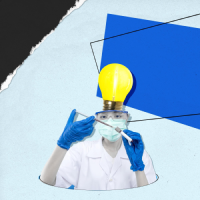by Ravindra Warang
6 minutes
Regulatory Pathways for Biopharmaceuticals
Explore the complex, multi-stage regulatory pathway for biopharmaceuticals, from initial research to market approval and post-approval monitoring.

For pharmaceutical companies, the journey to introducing a new drug in the market is complex, long, and exhaustive. According to McKinsey’s research, it takes approximately 12 years for pharmaceutical companies to launch their candidate drug in the market. This exhaustive, 12-year journey includes basic research, drug discovery, preclinical development, clinical trials, and, finally, regulatory approval. Of these steps, while basic research and drug discovery are known to be the most financially risky steps, other stages are just as challenging. Unfortunately, most people believe finding a drug is more challenging than getting it approved—which is just not true!
So, to clear this misconception, this article breaks down the biopharmaceuticals regulatory pathways. From conception to final marketing, and what happens afterwards—this article is a deep dive into the behind-the-scenes action in the pharma industry.
But before we begin, here is a quick definition: Biopharmaceuticals are drugs made from biological sources such as human cells, antibodies, proteins, microbes, fungi, etc.
Now that you know what biopharmaceuticals are, let’s discuss the steps taken to develop them.
Stage 1: The Idea

Long before developing the drug, scientists do basic research to understand a disease or its mechanism.
At this stage, not all research is conducted by pharmaceutical companies; even researchers in individual laboratories or academic institutes undertake these studies, but all have the same goal.
By understanding a disease or its mechanism, researchers determine products or processes that initiate or maintain the disease in the human body. They identify targets that can be attacked by drugs to prevent or cure the disease.
While this sounds relatively simple, it’s not—it’s almost like trying to predict how a person will behave in different scenarios. Hence, this stage often takes years—or even decades.
Once the target is identified, researchers develop drugs or modify existing ones to alter or destroy the target. Often, simulations are performed in the initial stages to reduce the available options from extensive molecular libraries.
Using simulations and experimental studies, millions of candidates are screened to identify their efficacy, toxicity, and behaviour toward the target. Finally, a candidate is narrowed down and decided as “the drug” most effective against the disease. This drug is taken to the next stage.
Stage 2: Preclinical studies
Once a single drug candidate is selected, preclinical studies are performed to evaluate its safety, toxicity, and efficacy using animal models. These studies aim to prove that the drug candidate is non-carcinogenic, non-mutagenic, and non-teratogenic. They also aim to prove the pharmacological properties of the product to justify human testing.
Various studies are undertaken at this stage:
- Safety evaluation: These tests identify the toxicity of the drug and define a safe dose for humans.
- Efficacy evaluation: These tests determine the therapeutic potential of the drug in animal models.
- Pharmacokinetics and pharmacodynamics testing: These tests study the absorption, distribution, metabolism, and excretion of drugs.
Cell cultures, organoids, and tissue models are first used for testing. If the drug passes these models, animal models (e.g., mice and rates) are used, followed by non-human primates and transgenic or humanized models.
Once the drug demonstrates the necessary efficacy, safety, and properties in these models, an investigational new drug (IND) application is filed.
Stage 3: Investigational new drug (IND) application
The IND is the application filed with regulatory bodies to request authorization for human clinical trials for a drug candidate. This submission is necessary to move to stage 3: clinical trials. According to the US Food and Drug Administration (FDA), the IND application must cover three areas:
- Animal pharmacology and toxicology studies: Preclinical data that shows the drug candidate is safe for initial testing in humans.
- Manufacturing information: Details of the composition and stability of the drug, along with manufacturer details.
- Clinical protocols and investigator information: Detailed protocols for clinical studies need to be provided along with qualifications of investigators and commitments to obtain informed consent and to review the study by an institutional review board.
After submission, pharma companies have to wait at least 30 days before initiating clinical trials.
Stage 4: Clinical Trials

Clinical trials are generally performed in three stages, and each stage has a different aim.
Phase 1 clinical trials
Phase 1 clinical trials involve 20-100 volunteers on who the drug is tested in people. Phase 1 aims to evaluate the drug’s safety, ideal dose, side effects, and symptoms of effectiveness in humans. Researchers gain the following information from Phase 1:
- Drug absorption, distribution, metabolism and excretion in the human body.
- Drug’s effect when administered with another drug.
- Drug’s tolerable dose with minimal or no side effects.
Phase 2 clinical trials
Phase 2 clinical trials involve the testing of the drug on patients with the exact condition or disease targeted by the drug. These studies can last several months to a few years. Researchers gain the following information from Phase 2:
- The exact dosage of the drug for patients.
- Common short-term side effects of the drug for patients.
- The exact regimen the drug should be used in.
This is considered proof of concept, wherein it is proven that the drug does exactly what it is intended to do.
Phase 3 clinical trials
Phase 3 clinical trials aim to prove the drug’s benefits for the large patient population with the disease. These trials are conducted on several hundred patients with the disease and take place over several years at different clinics across the world. Phase 3 trials provide proof that the medicine meets the legal requirements of regulators, which is necessary for marketing approvals.
Stage 5: NDA, BLA, or MAA

Once Phase 3 clinical trials are successful, companies have to file one or more of the following documents with their local or international regulatory authorities.
New drug application (NDA)
A NDA is an application submitted to seek FDA approval for the sale and marketing of a new drug. A traditional NDA includes information about the drug gained from preclinical studies as well as Phases 1-3 of clinical trials. The application also includes detailed information about formulation development, proposed manufacturing processes, and labeling information. The NDA should provide enough information so that the regulatory body can determine whether the drug is safe and effective for the proposed use and the benefits of the drug outweigh any risks.
Biologics license application (BLA)
A BLA is a request to introduce a biological product into the market. The BLA also contains the same information as the NDA. BLAs should also provide specific information on the manufacturing process, chemistry, pharmacology, clinical pharmacology, and medical effects of the drug. However, BLAs are limited to biological products like monoclonal antibodies for in-vivo use, cytokines, growth factors, enzymes, immunomodulators, proteins intended for therapeutic use, etc.
Marketing authorization application (MAA)
An MAA is another application submitted by the drug manufacturer to market the product to the general public. Like NDA and BLA, the MAA should contain information from preclinical studies and clinical trials so that the regulatory authority can confirm the efficacy of the drug.
All three applications are relatively similar, and they only differ in terms of where they are filed. NDAs are used by India and China, BLAs are used by the US, and the UK and European Union use MAAs.
Stage 6: Marketing and Safety Monitoring
Once the drug has received the necessary approvals, the drug manufacturer can market it. In some cases, regulatory bodies may decide the manufacturer needs to conduct additional post-approval studies. Hence, pharma companies have to plan and execute these studies. These studies aim to:
- Test the long-term safety, efficacy, risk, and benefits of the drug.
- Test the drug in different delivery modes (e.g., capsules, tablets, pills, etc.).
- Test the drug for new uses (e.g., the treatment of a different condition).
- Test the drug for a specific population subset (e.g., children).
The designs for these tests also have to meet Phase 3 clinical trial standards. Once the necessary tests are performed, the new data is submitted to the regulatory body for additional approvals.
So, this is the regulatory pathway for biopharmaceuticals.
Conclusion
The discovery, development, manufacturing, and marketing of a drug are a lot more complex than most people realize. Interestingly, pharma companies often juggle several drug candidates at the same time! For example, as of October 2024, Pfizer has 108 drug candidates in their pipeline, Roche has 143, Johnson & Johnson has 94, and Bristol Myers has 54. It only goes to show how much goes behind developing the medicines we consume!
FAQs
1. What is a regulatory pathway in biopharmaceuticals?
A regulatory pathway is the process biopharmaceutical companies follow to gain approval for their products from regulatory authorities. It involves demonstrating the product’s safety, efficacy, and quality via preclinical and clinical studies.
2. Which bodies approve biopharmaceuticals?
The most well-known regulatory bodies include the US FDA, EMA, MHRA, PMDA, and CDSCO, which approve drugs for human consumption. However, individual countries also have their regulatory bodies.
3. How do Good Manufacturing Practices (GMP) influence biopharmaceutical approval?
Compliance with GMPs ensures product quality, consistency, and safety. Regulatory agencies inspect facilities to verify their adherence with GMPs during approval and post-approval processes.




